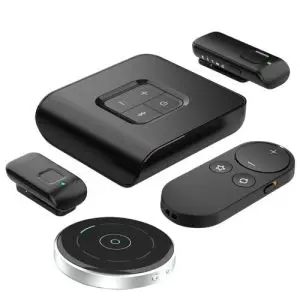Split Processing is the Latest Technology from Signia Hearing Aid Company.
A Review of the EE Times Written by Brian Taylor, Signia, Jan 20, 2022
Reviewed by Karen
When you are watching a movie, your brain is “hearing” a lot of things. Talking, music in the background or maybe other types of background noises, like people walking or rain on the rooftop. There is a lot to process. When the sound engineer wants the audience to focus on the dialogue, they will add contrast to the speech track to draw your attention to it. Now, new hearing technology can achieve the same effect for those wearing hearing aids.
If you wear a hearing aid, you know there are many challenges. One of the biggest is hearing what you want to hear when there is noise in the background. It is hard to hear across the table in a noisy restaurant, or hear the specials from the waiter when he comes up behind you. It is exhausting; so much so that some decide it is not worth the trouble and they isolate themselves.
Hearing aid manufacturers tried to address this by using full audio transfer between aids and multiple types of digital noise reduction, all in the same aid. That can work, but it has limitations. When the typical hearing aid is used in noisy situations, all the sound is processed, amplified, or attenuated, in the same way at the same time. Noise reduction is applied to the entire sound system.
New advances in signal processing has allowed the aid to separate speech from background noise.
Have you ever seen a TV show or a movie that has someone in a sound booth; a singer or a band taping a new song perhaps? Then you see a sound engineer sitting in front a board with a dizzying number of lights, buttons, and switches that move up and down. Once each band member has played his or her part, the sound engineer takes each track and puts it all together. In that process, he or she adds gain to one part or decreases another part until the song “sounds” the way they want it to sound. This is split processing.
In a hearing aid, once the sound is detected it is split into two distinct audio streams. One from the directional microphone for sounds coming from the front of the wearer (usually speech or focused sound), and another for sounds coming primarily from behind the wearer (usually background or surrounding sound). The sound then enters its own processor for analysis and is then recombined into a single stream.
This split processing can do more than noise reduction. Go back to the sound booth, the sound engineer, and the big board. Now in the booth is not a singer or a band, but an actor reading a script.
That same audio engineer can make the speech clearer, crisper, and more detailed. In the hearing aid, less compression and noise reduction are given to the speaker and more to the background sounds. That means the wearer, while he or she can still hear the sound of the restaurant, that sound is more distant, making the focused speech clearer.
The reasons people do not wear hearing aids when they are needed are many and varied.
At our clinic Hears to U and at Hears Hearing & Hearables, we often hear people complain about the sound of the hearing aids. It doesn’t sound natural. They cannot hear what they want to hear when they want to hear it. With split-processing technology in the Signia AX device, compression and noise reduction are not applied to all that is being “heard”. This allows the wearer to better hear speech in noise, reduce fatigue, increase their connection to the world, decrease isolation and ultimately, increase their quality of life.
At Hears to U Audiology and Hears Hearing & Hearables, we believe that all who are interested in hearing health should know about the latest technological advances. If you have questions or want to read the full article, contact us at any time.





